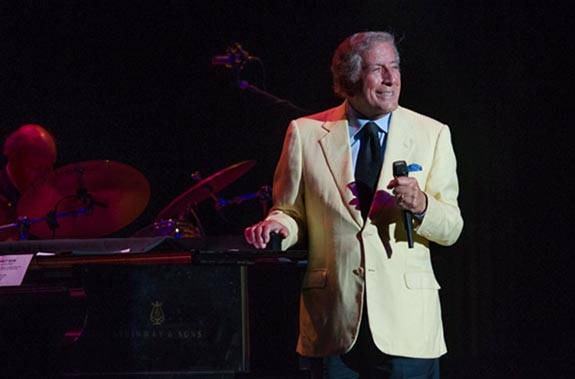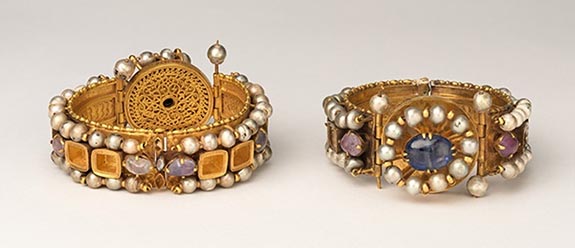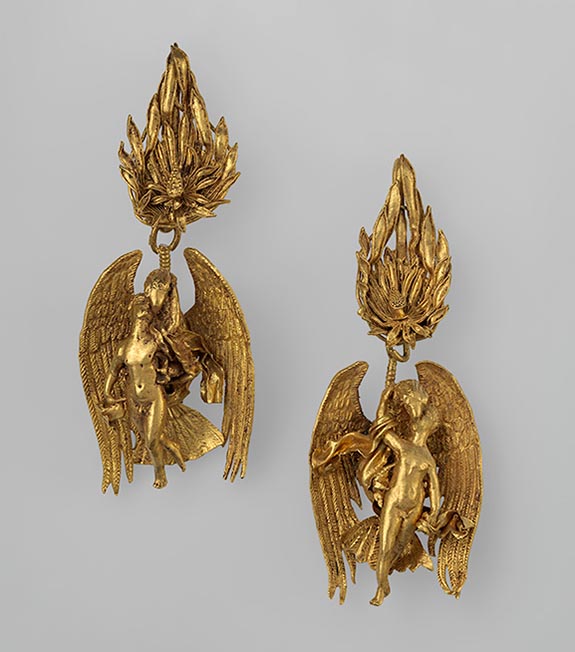Welcome to Music Friday when we bring you nostalgic songs with jewelry, gemstones or precious metals in the title or lyrics. Today's tune, "I Can't Give You Anything But Love, Baby," has its roots in New York City during the Roaring Twenties. In the song, a young suitor tells his girlfriend that he really wants to buy her a fine-quality diamond bracelet but — for now — all he can offer is love.
Jimmy McHugh and Dorothy Fields had written the score for a revue at Les Ambassadeurs Club in 1928, but were lacking a "smash hit" that their producer demanded. Their inspiration for "I Can't Give You Anything But Love, Baby" came from a chance encounter with a young couple in front of Tiffany's on Fifth Avenue. It seemed to the writers that the man didn't have the resources to buy the diamond jewelry in the display window, and then they heard him say, "Gee, honey I'd like to get you a sparkler like that, but right now, I can't give you nothin' but love!"
McHugh and Fields ducked into the nearby Steinway Tunnel of the #7 subway line and composed the breakout show tune in less than an hour.
Their lyrics: "Gee I'd like to see you looking swell, baby. / Diamond bracelets Woolworth doesn't sell, baby. / Till that lucky day you know darned well, baby. / I can't give you anything but love."
The song was originally performed by Adelaide Hall, but over the years, "I Can't Give You Anything but Love, Baby" has been covered by the some of the most popular names in the music business, from Tony Bennett, Bing Crosby and Dean Martin to Judy Garland, Doris Day and Ella Fitzgerald. On the list of the 100 most-recorded songs from 1890 to 1954, the McHugh/Fields show tune rated #24.
The version of the song featured here was sung by Bennett in 1956 and was the fourth track of his 10-inch LP, Because of You. Interestingly, 58 years later, Bennett would reprise the song in a duet with Lady Gaga. That version appeared on their 2014 album, Cheek to Cheek.
Anthony Dominick Benedetto, better known as Tony Bennett, was born in Queens, N.Y., in 1926. At the age of 13, he started singing for money at several Italian restaurants in his neighborhood. Upon his discharge from the Army after World War II, Bennett was taught the bel canto singing discipline at the American Theatre Wing.
In 1949, he got his big break when Pearl Bailey asked him to open for her in Greenwich Village. Bob Hope, who had been invited to her show, was impressed by Bennett's talent and offered to take him on the road. The next year, Bennett signed with Colombia Records.
Amazingly, Bennett, who will celebrate his 92nd birthday next week, has been performing professionally for more than 70 years. Over that time, he has sold more than 50 million records and has won 19 Grammy Awards, including a Grammy Lifetime Achievement Award in 2001.
Please check out the audio track of Bennett's rendition of "I Can't Give You Anything But Love, Baby." The lyrics are below if you'd like to sing along...
"I Can't Give You Anything But Love, Baby"
Written by Dorothy Fields and Jimmy McHugh. Performed by Tony Bennett.
I can't give you anything but love, baby.
That's the only thing I've plenty of, baby.
Dream awhile, scheme awhile
We're sure to find
Happiness and I guess
All those things you've always pined for.
Gee I'd like to see you looking swell, baby.
Diamond bracelets Woolworth doesn't sell, baby.
Till that lucky day you know darned well, baby.
I can't give you anything but love.
Rome wasn't built in a day, kid.
You have to pay, kid, for what you get.
But I am willing to wait, dear,
Your little mate, dear, will not forget.
You have a lifetime before you.
I'll adore you, come what may.
Please don't be blue for the present,
When it's so pleasant to hear you say
I can't give you anything but love, baby.
That's the only thing I've plenty of, baby.
Dream awhile, scheme awhile
We're sure to find
Happiness and I guess
All those things you've always pined for.
Gee I'd like to see you looking swell, baby.
Diamond bracelets Woolworth doesn't sell, baby.
Till that lucky day you know darned well, baby.
I can't give you anything but love.
Credit: Image of Tony Bennett performing at the Blaisdell Concert Hall in Honolulu, Hawaii, by Peter Chiapperino: a concert photographer in Lexington, Kentucky [CC BY-SA 3.0 ], from Wikimedia Commons.






